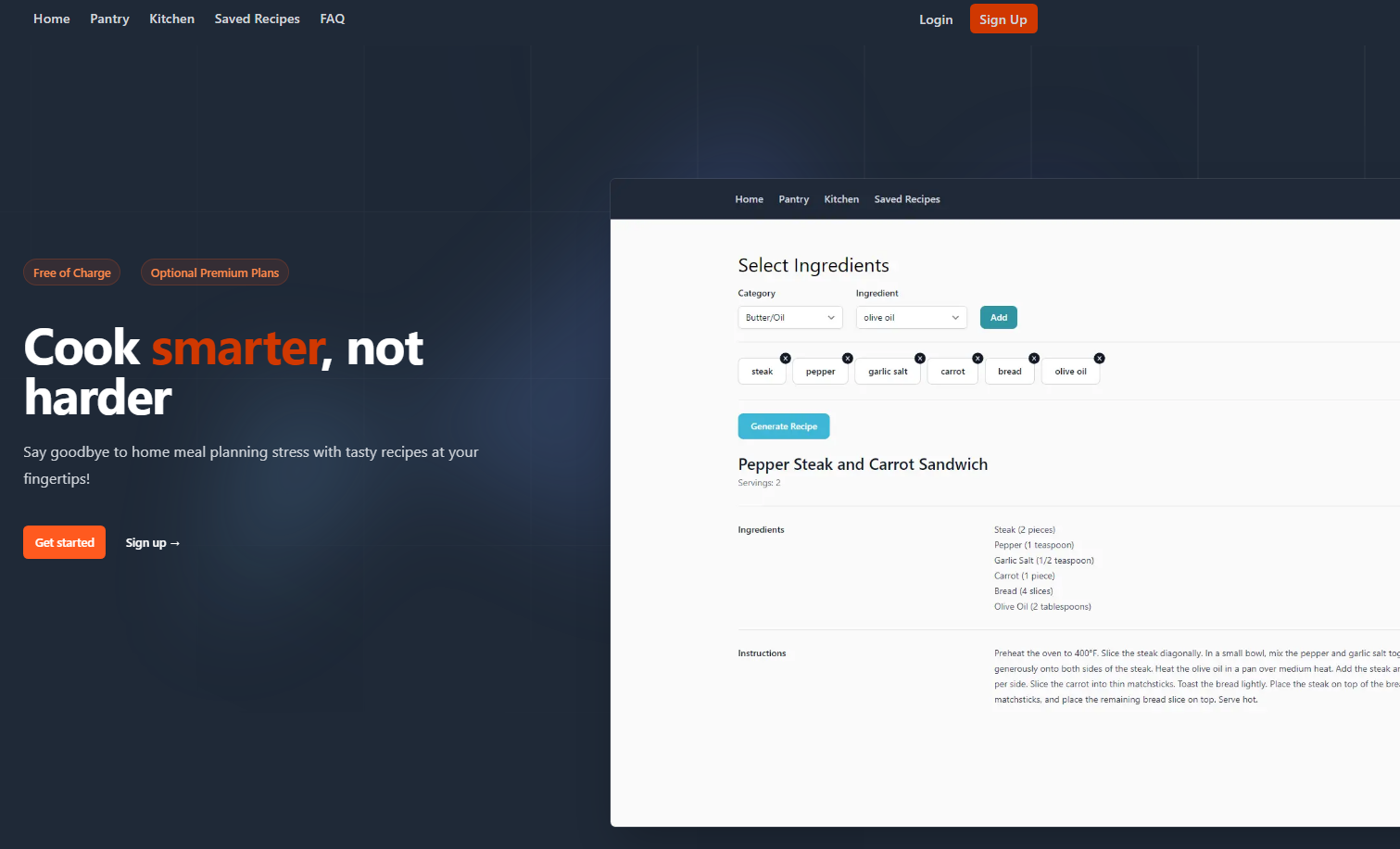A web application built with Next.js, React, JavaScript, and Tailwind CSS that helps users manage their pantry, generate recipes, and save and edit their favorite recipes.
The "I'm Hungry" app allows users to perform the following actions:
-
Sign Up: Create a new account with a unique username and password.
-
Log In: Log in to the application using your credentials.
-
Pantry: Add the food items you have in your pantry.
-
Kitchen: Select ingredients from your pantry and generate a recipe using ChatGPT's AI.
-
Saved Recipes: View all your saved recipes and make edits if needed.
-
Folder Structure The project's folder structure is as follows: public: Contains public assets such as images. src: Contains the main source code for the application. components: Contains reusable components for the application's UI. db: Contains configuration files for MySQL and model schemas using Sequelize. pages: Contains the endpoint files for different pages. The
pages/apidirectory is mapped to/api/*. Files in this directory are treated as API routes instead of React pages. styles: Contains global CSS styles. utils: Contains utility middleware and functions. .env: Environment configuration file.Developers should pay attention to the following files and directories: src/components: Contains reusable UI components. src/db: Contains database configuration and model schemas. src/pages: Contains endpoint files for different pages.
You can check out our application demo following the youtube link!
Youtube video link for demo usage of the web application
Pantry Management: Users can add the food items they have into their pantry. Recipe Generation: Users can select ingredients from their pantry and generate a recipe using ChatGPT's AI. Saved Recipes: Users can view and edit their saved recipes.
The "I'm Hungry" app utilizes the following technologies, frameworks, and libraries:
- ☑ Next.js
- ☑ React
- ☑ JavaScript
- ☑ OpenAI API
- ☑ JWT
- ☑ Sequelize
- ☑ Axios
- ☑ MySQL
- ☑ Tailwind CSS
To run the application locally, follow these steps:
Open the terminal and navigate to the project directory.
Run the following command to install the dependencies:
- npm install
Add local env variables
- check out
.env.exampleto see the env variables needed to run the app
Create mySQL db following the schema located in src/db/schema
Start the development server by running the following command:
- First, run the development server:
npm run dev
# or
yarn dev
# or
npm devOpen http://localhost:3000 with your browser to access the application.
You can also check out the gif below to see how we start up our server!
GIF showing user how to install dependencies and starting up the server
To learn more about Next.js, take a look at the following resources:
- Next.js Documentation - learn about Next.js features and API.
- Learn Next.js - an interactive Next.js tutorial.
The application integrates with the following external API:
ChatGPT: Used to generate recipes. Please set up the following environment variables in your .env file:
API_KEY: Your ChatGPT API key. API_ENDPOINT: The API endpoint for ChatGPT. API_MODEL: The model to use for generating recipes. API_ROLE: The role assigned to your ChatGPT API.
The application is already deployed on Heroku. If you would like to contribute, please create a pull request, and the owner will update the Heroku deployment with the changes.
Implement daily, weekly, and monthly meal plans. Personalize meal plans based on dietary restrictions. Allow scaling of recipes based on the number of servings. Add a chatbox feature to interact with ChatGPT. Enable recipe sharing on social media platforms.
Contributions to the project are welcome. If you would like to contribute, please follow these guidelines:
- Pull from the main branch before committing your code.
- Create a pull request
- Someone on the team will take a look at your code and then merge to main, along with updating Heroku with your changes.
MIT License
